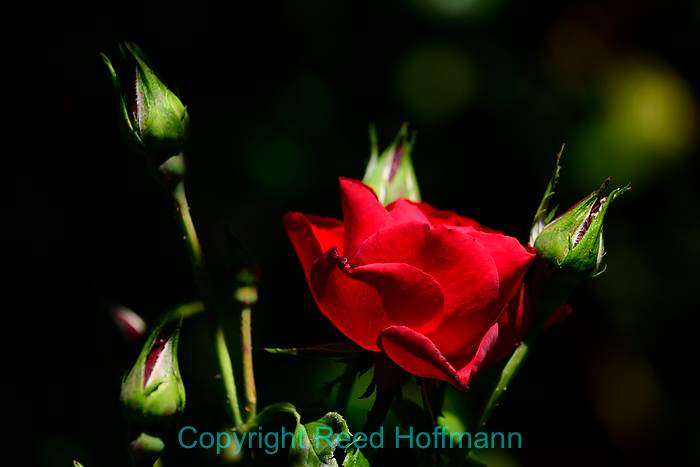When people ask what exposure mode I use, I reply with my favorite two words in photography – “it depends.” Most of the time I shoot in Aperture Priority, but there are times when I use Program, Manual, or even full Automatic. Before I began teaching, though, I worked almost entirely in Manual mode. And recently I decided to do that again.
One of the challenges in photography is to avoid getting stuck in a rut, to find different ways to approach your work. In the last month I’ve had the opportunity to do two nice photo trips, a personal one to Yosemite and a group trip to New Zealand. And for both of those I decided to make a change to how I worked, by shooting in Manual exposure mode, instead of Aperture Priority.
When people ask me about shooting in Manual, I always warn them that it’s the most difficult mode, and the one where you’re most likely to make mistakes. That’s because you’re taking total control of exposure – you have to choose both the shutter speed and aperture you want. If you’re not paying attention, always remembering that, then you’re going to make mistakes and miss pictures. And that’s why I chose to go back to Manual – I wanted to force myself to make conscious decisions about how I was shooting. And it took me back to the basics.
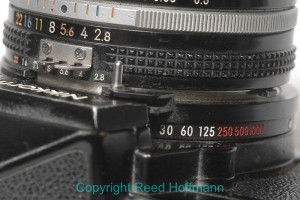
My first Nikon camera, a Nikkormat FTN I bought in the 70s, didn’t have exposure modes, just a dial for shutter speed and a ring for aperture. Nikon D70, ISO 640, 1/60, f/14, 105mm Micro. Photo copyright Reed Hoffmann.
When I started in photography in the 1970’s, there were no exposure modes on cameras – they were all manual. With most cameras you set the ASA (now ISO), and then had a meter read-out that helped you get a proper exposure by adjusting both shutter speed and aperture. Some cameras didn’t have a built-in light meter, so you used a hand-held, or guessed. And I worked that way right until the early 2000’s, even though cameras by then offered at least one automatic mode.
As I began to do more and more teaching, though, I realized that while most people wanted to learn photography, they also wanted to get good pictures. And automatic modes helped them do that more easily. So I began experimenting with those different modes: Program, Aperture and Shutter. In time I came to love Aperture mode, combining that with Exposure Compensation (EV) to get the exposures I wanted. And Manual was relegated to when I was using strobes to light a subject, or scene, and wanted complete control over ambient light.
Automatic exposure modes like Aperture give you the advantage of being able to work quickly, concentrating on what you’re shooting, without having to think too much about exposure. My reason for preferring Aperture over the others is that I set aperture (and thus control depth of field) while letting the camera match a shutter speed for correct exposure. As long as I keep an eye on the shutter speed, to make sure it doesn’t go too low (and result in blur), then I’m good. However, there are downsides to modes like Aperture too.
One problem with automatic exposure is that the exposure the meter chooses isn’t necessarily best. The meter doesn’t have a brain, doesn’t know what you care about in the scene, so basically reads an average of the light values to calculate the proper exposure. Newer systems like Matrix, sometimes called Evaluative, do this in a “smarter” way, but can still be fooled. However, using exposure compensation you can compensate for that. The bigger problem is that while you might find the perfect exposure for the scene you’ve framed, if you change your framing, or composition, the exposure can change. That’s because you’ve changed the quantities of light and dark tones, and the meter adjusts for that. This is where Manual can be a big help.
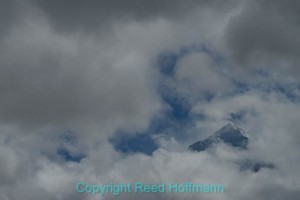
Once I found the exposure I liked, I could keep it there using Manual. Nikon D800, ISO 100, 1/2000, f/8, 0.0 EV, 70-200mm f/4 lens. Photo copyright Reed Hoffmann.
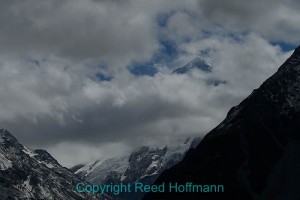
Even when I zoomed out, the exposure remained the same because I was in Manual mode. Nikon D800, ISO 100, 1/2000, f/8, 0.0 EV, 70-200mm f/4 lens. Photo copyright Reed Hoffmann.
Using Manual exposure mode, you set shutter and aperture, and the camera exposes for those values until you change them. Regardless of the framing of the scene or your position. That means once you’ve determined the exposure you want, you can simply shoot, confident about your exposure. Not until the light changes, or you decide you want a different look to your photos, do you need to change exposure. Of course, this makes working in a rapidly changing situation more difficult. Which is why I’ll still choose to shoot Aperture Priority much of the time.
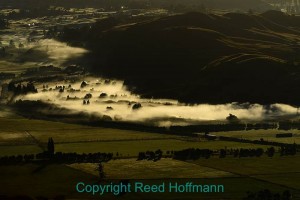
Setting my exposure for the fog made it stand out against the surrounding ground. Nikon D800, ISO 125, 1/1600, f/8, 0.0 EV, 70-200mm f/4 lens with TC 1.4E II teleconverter. Photo copyright Reed Hoffmann.
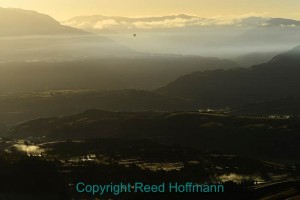
And keeping the same exposure, even zoomed out, meant I kept the same look to the scene. Nikon D800, ISO 125, 1/1600, f/8, 0.0 EV, 70-200mm f/4 lens with TC 1.4E II teleconverter. Photo copyright Reed Hoffmann.
“It depends” is a great phrase when talking photography. There are few things that are right all the time, and exposure modes are no exception. When I’m in a hurry, in a rapidly changing situation, or simply don’t want to think too much about exposure, I’ll be shooting in Aperture Priority mode. When I can take more time, like shooting landscapes, I’ll be more likely to switch to Manual.
One of the great advantages to photography today is that we have more tools available, if we choose to make use of them. Exposure modes are some of those, and like most things in life, they’re not “one size fits all.” Think about what exposure mode is best for what you’re doing. If you’re not comfortable with the different modes, now’s a great time to start experimenting and playing with them. The more you understand how your camera works, the better prepared you’ll be to take advantage of that in the right situation. And that will mean better pictures.

